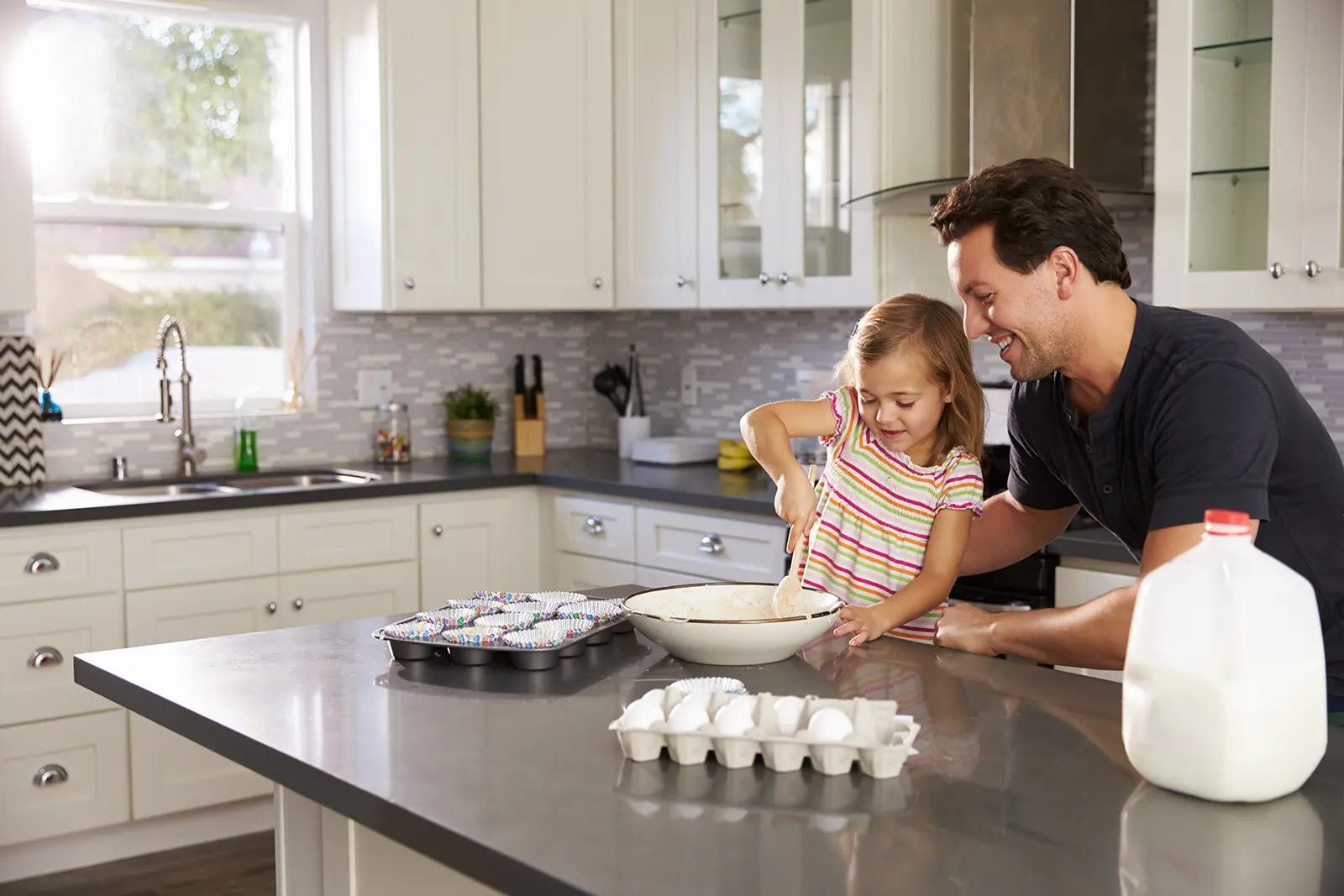Related Products
LYSOL® Kitchen Pro Antibacterial Cleaner - Trigger
Clean and Disinfect![LYSOL® Kitchen Pro Antibacterial Cleaner - Trigger 22 oz.]()
LYSOL® Disinfectant Spray - Crisp Linen®
Kills 99.9% of Germs*![LYSOL® Disinfectant Spray - Crisp Linen®]()
LYSOL® Disinfecting Wipes - Lemon & Lime Blossom® 80 ct.
Cleans & Disinfects Surfaces*![LYSOL® Disinfecting Wipes - Lemon & Lime Blossom® 80 ct.]()
Show 1 of 3
Cleaning the kitchen efficiently and effectively takes some practice, but once you learn how to clean a kitchen, you will be able to easily maintain it. Read on to learn how to deep clean your kitchen.
Surfaces
The kitchen contains more germs than any room in the house1. Cleaning the kitchen surfaces can help keep your home healthy.
Large Appliances
Small Applicances
One in six Americans experience a foodborne illness yearly, and small appliances can account for some of the most germy kitchen items. Be sure you know that cleaning the kitchen means cleaning these overlooked areas.
Knowing how to clean a kitchen is half the battle – with these tips in mind, you'll be able to efficiently keep your home healthy.
How To Disinfect & Clean Kitchen Countertops
With so much happening on your countertops from chopping and preparing food to cooking and storage, spillages and cross-contaminations can be common.
How to clean countertops
For most families, the kitchen is the heart of the home. It’s a place where people congregate for conversations, family meals, makeshift arts and crafts and much more. To look after your countertop surfaces, you should wipe up any food residue, liquid or grime as soon as they appear. To clean your countertops, we would recommend a strong antibacterial cleaner such as Lysol® All-Purpose Cleaner.
For best results, follow these instructions:
Please note, no rinsing is required.
How to disinfect countertops
As your countertops are so often exposed to food and therefore viruses, there are times that you will not only want a cleaner, but something for sanitizing and disinfecting countertops, too. In these instances, use Lysol® Kitchen Pro Antibacterial Cleaner using the steps below:
Your kitchen is undoubtedly a place for sharing, but this should not be the case when it comes to germs. With Lysol®, you can make sure that your kitchen countertops are not only sparkling clean, but thoroughly sanitized for your family!
How to Clean a Kitchen Sink
The kitchen sink should be the last thing that you clean in your kitchen. And, when you do, you’ll need to make sure that it’s sanitized from nasty foodborne germs as well as looking sparkling.
Your kitchen sink sees a lot of mess in its lifetime – including dirty dishes, food waste and a build-up of bacteria. This is particularly true because, during a kitchen clean, you’re likely to deposit liquids and food waste in your sink while tackling other surfaces.
When you clean your sink, you’ll need to make sure that it’s sanitized from nasty foodborne germs as well as looking sparkling. This guide contains tips and tricks from Lysol®, no matter what material your kitchen sink is made of.
THE BEST WAY TO CLEAN A STAINLESS STEEL SINK
Stainless steel sinks are great for their affordability and easy maintenance, but, if they aren’t looked after properly it’s possible they can become scratched. You should therefore always avoid abrasive cleaners that could do this damage, such as steel wool or steel brushes. Instead, opt for a soft cloth that cannot cause corrosion.
Our best cleaner for stainless steel sinks is Lysol® Kitchen Pro Antibacterial Cleaner. It cuts through the toughest of grease (even food stains!) with no harsh chemical residues, helping to protect your family from foodborne illness. Here’s what to do:
THE BEST WAY TO CLEAN A PORCELAIN SINK
Not all – but most – porcelain sinks are white. This means that not only do we have to consider cleaning the kitchen sink thoroughly so that it is sanitized from germs, but also making sure it keeps its colour and shine. White sinks can tend to grey and go darker over time, so you’ll want something that specifically brightens, too.
Our Lysol® Bleach Free Hydrogen Peroxide Multi-Purpose Cleaner is a great way to whiten porcelain without bleach. It delivers a powerful clean with 0% bleach – and dissolves grease as well as whitening without the use of any harsh chemical residues. To clean, disinfect and whiten your porcelain sink, simply follow these steps:
Please note: Please always use Lysol products as directed on the label.
How you look after your sink depends on a few things, from the material it’s made of to what typically goes in it. For example, a bathroom sink and a kitchen sink should be tended to in a different way to ensure both remain in good condition for as long as possible.
And when it comes to the kitchen area, always remember – with so much food and liquids coming into contact with your sink, make sure you’re not just cleaning, but consistently sanitizing from harmful bacteria, too.
